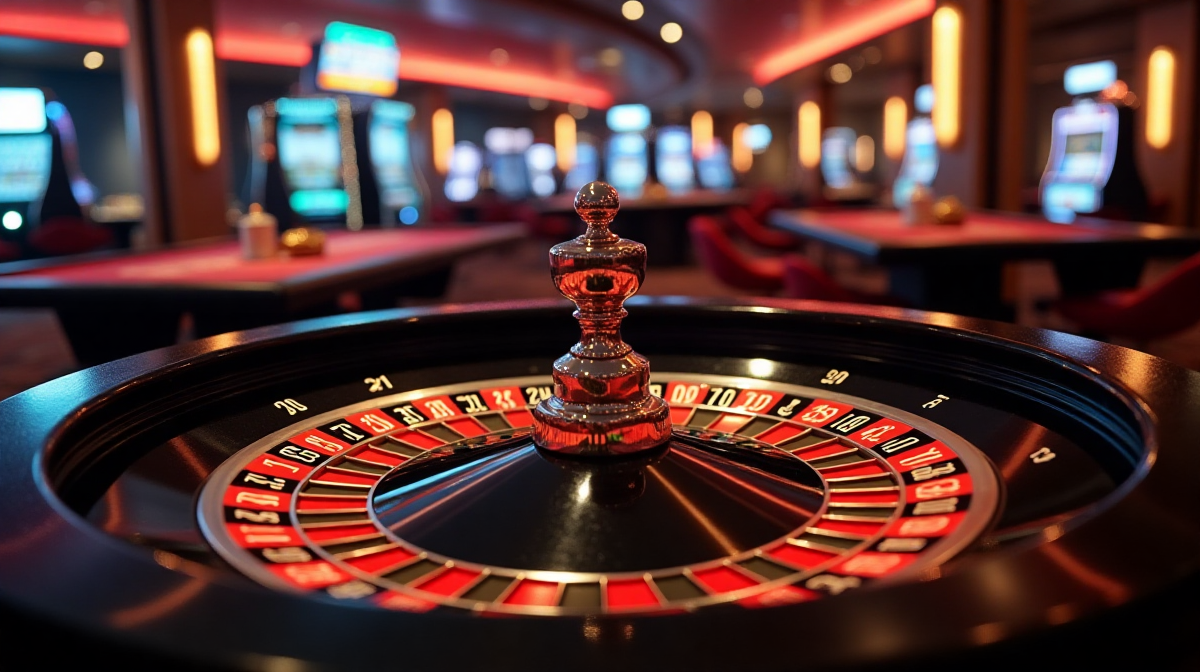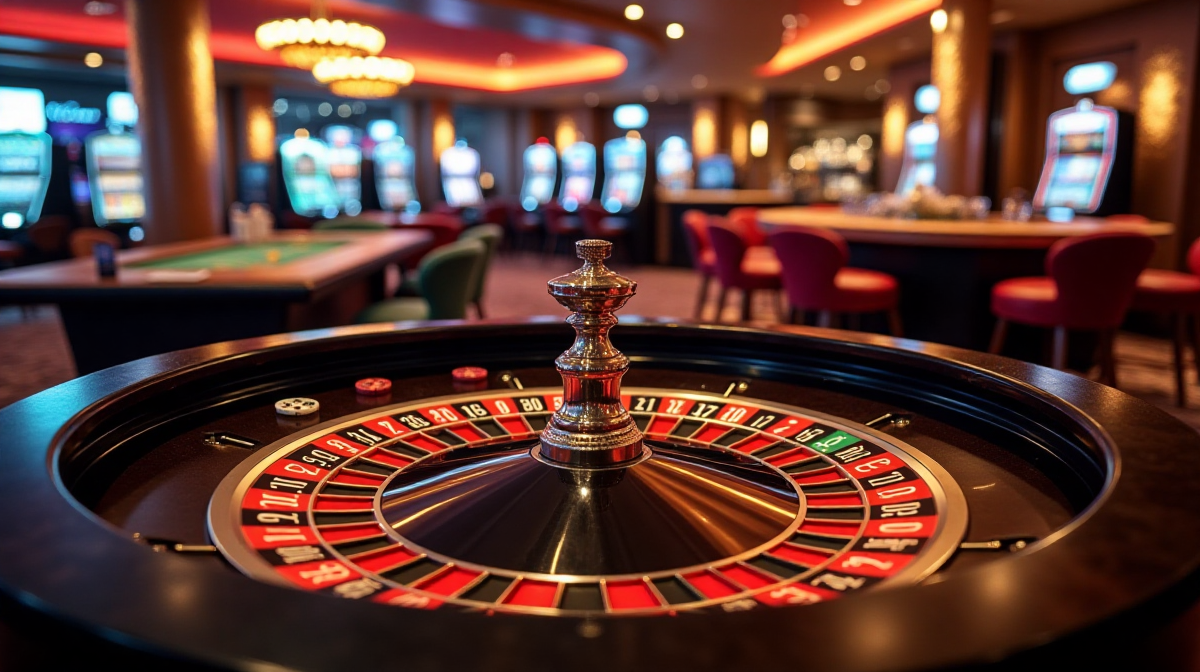Red Door Roulette Tracker: Does it Actually Work?
What is Red Door Roulette and Why the Buzz?
The world of Animal Crossing: New Horizons is filled with delightful surprises, and one of the most sought-after is the appearance of the red door at Nook’s Cranny. This special door offers exclusive items, making it a highly coveted event for players. The “Red Door Roulette,” as it’s commonly known, refers to the seemingly random process of triggering this appearance. The allure of obtaining rare items has led to a dedicated community attempting to decipher the mechanics behind it, and a growing interest in tools like the Red Door Roulette Tracker. Many players, while enjoying the game, are also looking for ways to maximize their winnings elsewhere, even exploring options like Bet9ja for potential returns.
Briefly Explain the Tracker's Promise - Increased Red Door Odds?
The Red Door Roulette Tracker promises to increase your chances of seeing the red door by meticulously recording data related to villager visits, dialogue, and other in-game actions. The core idea is that there’s a hidden pattern, a specific combination of events that triggers the red door, and the tracker helps identify this pattern. However, the question remains: is this promise realistic, or is it a case of finding patterns where none truly exist? Understanding how to withdraw on bet9ja account might seem unrelated, but both endeavors involve a degree of probability and strategy.
Scope of this Article – Analyzing Effectiveness & User Experiences
This article will delve into the world of the Red Door Roulette Tracker, exploring its underlying principles, examining user experiences, and critically evaluating whether it genuinely improves your odds of encountering the red door. We’ll separate fact from fiction, addressing common theories and offering practical advice for those who choose to use a tracker. We will also touch upon the importance of responsible gaming and understanding the rules when dealing with winnings, such as how to withdraw money won with bet9ja bonus.
Understanding Red Door Roulette & the Tracking Concept
How Red Door Roulette Works in Animal Crossing: New Horizons
The red door appears randomly at Nook’s Cranny, replacing the standard shop entrance. When you enter, you’ll find exclusive furniture and items that are not available through regular means. The trigger for the red door is shrouded in mystery, with no official confirmation from Nintendo on the exact mechanics. This ambiguity fuels the search for patterns and the development of trackers.
The Rationale Behind Tracking – Identifying Patterns
The rationale behind tracking is simple: if the red door isn’t truly random, then certain actions or conditions must increase the probability of its appearance. By meticulously logging data, users hope to uncover these hidden conditions. This is similar to the logic behind certain best roulette strategy approaches – attempting to identify patterns in a game of chance.
Common Theories & Beliefs About Red Door Trigger Conditions
Numerous theories abound within the Animal Crossing community. Some believe it’s tied to the number of villagers you’ve spoken to, others suggest it’s linked to gift-giving or specific in-game events. Some even speculate about the day of the week or real-world date playing a role. While these theories are intriguing, they lack concrete evidence and often rely on anecdotal observations.
Deep Dive into the Red Door Roulette Tracker
Available Tracker Options – Spreadsheet vs. Apps vs. Websites
Several options are available for tracking red door data. The most common method is using a spreadsheet (Google Sheets or Excel), allowing for customizable data entry and analysis. Dedicated apps and websites also exist, offering more automated tracking features, but often with limited flexibility. Some even incorporate features to analyze data and suggest optimal playtimes.
Key Data Points Tracked: Villager Visits, Dialogue, Gift Giving, etc.
Trackers typically record a wide range of data points, including: the number of villagers visited, the dialogue options chosen during those visits, whether gifts were given (and to whom), the current day of the week, the in-game date, and whether any special events are occurring. The goal is to capture as much relevant information as possible to identify potential correlations.
How the Tracker is Supposed to Work - Algorithm/Logic Explanation
The tracker’s logic relies on identifying patterns within the collected data. For example, if the red door appears frequently after visiting a specific villager and giving them a particular gift, the tracker might highlight this as a potential trigger. However, it’s crucial to remember that correlation doesn’t equal causation. Just because two events occur together doesn’t mean one causes the other.
Does the Tracker Actually Work? Examining the Evidence
Analyzing User Reports & Anecdotal Evidence – Success Stories?
User reports are mixed. Some players swear by the tracker, claiming it significantly increased their red door appearances. They share success stories and detailed logs of their tracking efforts. Others report no noticeable difference, even after diligently tracking for weeks or months. It's important to note that even successful reports could be due to chance. The thrill of the chase can be similar for those trying to crack the code of the red door or consistently winning with a strategy on platforms like Bet9ja.
Critically Evaluating Tracker Claims – Correlation vs. Causation
The biggest challenge with tracker claims is distinguishing between correlation and causation. Just because a specific pattern precedes the red door appearance doesn’t mean it caused it. It could be a mere coincidence. For example, a player might consistently visit a specific villager before the red door appears, but that villager’s visit could be entirely unrelated.
Potential Biases in User Reporting – Confirmation Bias & Selective Memory
User reporting is subject to biases. Confirmation bias leads people to focus on data that confirms their existing beliefs, while ignoring data that contradicts them. Selective memory causes people to remember successful outcomes more vividly than unsuccessful ones. These biases can skew perceptions and lead to inaccurate conclusions.
Data Analysis Challenges – Sample Size, Data Integrity, Randomness
Analyzing red door data presents significant challenges. The sample size is often small, making it difficult to draw statistically significant conclusions. Data integrity can also be an issue, as errors in data entry can distort results. Finally, the inherent randomness of the red door appearance makes it challenging to isolate specific triggers.
Factors Influencing Red Door Appearance
The Role of Time & Real-World Date
Time and the real-world date may play a role. Some players believe the red door is more likely to appear around holidays or special events, although this is largely based on anecdotal evidence. Nintendo might adjust the appearance rate to coincide with certain occasions.
The Impact of Island Developement & Progression
Island development and progression could also influence the red door’s appearance. Players with more established islands, with a larger number of villagers and completed infrastructure, might have a higher chance of encountering the red door.
Examining the Randomness Factor – Is it Truly Random?
Despite all the tracking efforts, the red door might be fundamentally random. Nintendo could be using a complex algorithm that incorporates multiple factors, making it virtually impossible to predict its appearance with certainty. It’s like the unpredictability of the spin in a red door roulette tracker – sometimes you win, sometimes you don’t.
Resetting Your Island & Potential Impact on Red Door
Resetting your island can potentially impact the red door’s appearance. Some players believe that resetting can “reset” the algorithm, potentially increasing your chances of seeing the red door. However, this is purely speculative and comes with the significant drawback of losing all your island progress.

Alternatives to Using a Tracker
Passive Observation – Simply Playing & Noting Visits
Instead of meticulously tracking data, you can simply play the game as usual and passively observe when the red door appears. Note the circumstances surrounding its appearance (e.g., which villagers you visited, what gifts you gave) to see if any patterns emerge organically.
Focusing on Other Island Activities
Focusing on other island activities, such as crafting, fishing, or bug catching, can help you avoid obsessing over the red door. This can make the game more enjoyable and reduce frustration.
Accepting the Randomness & Managing Expectations – Mental Approach
The most effective approach might be to accept the randomness of the red door and manage your expectations. Don’t rely on the tracker to guarantee success. Enjoy the game for what it is, and consider the red door a pleasant surprise when it appears.

Practical Guide: Using the Tracker Effectively
Setting Up Your Tracker – Step-by-Step Instructions
If you choose to use a tracker, start with a simple spreadsheet. Create columns for: Date, Day of the Week, Villagers Visited, Gifts Given, Dialogue Choices, Red Door Appearance (Yes/No).
Accurately Recording Data – Best Practices & Pitfalls to Avoid
Record data accurately and consistently. Avoid making assumptions or generalizations. Be specific when recording dialogue choices and gifts given.
Interpreting Tracker Results – What to Look For
Look for potential correlations, but be cautious about drawing conclusions. Don’t fall victim to confirmation bias. Remember that correlation doesn’t equal causation.
Conclusion: Is the Red Door Roulette Tracker Worth Your Time?
Summarizing the Evidence – Does it significantly increase your chances?
The evidence suggests that the Red Door Roulette Tracker does not significantly increase your chances of encountering the red door. While some users report success, these reports are often anecdotal and subject to biases.
Weighing the Pros and Cons – Time Investment vs. Potential Reward
The time investment required to track data accurately is substantial. The potential reward – a slightly increased chance of seeing the red door – is relatively small.
Final Thoughts & Realistic Expectations for Red Door Hunting.
Ultimately, the Red Door Roulette Tracker is a tool for players who enjoy data analysis and the thrill of the hunt. However, it’s important to have realistic expectations. The red door is likely a fundamentally random event, and no tracker can guarantee its appearance. Just like relying on a best roulette strategy or hoping for a big win on Bet9ja, it's about managing expectations and enjoying the game.


